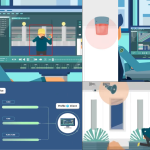As an organization that develops open standards, ONVIF creates publicly available specifications that define how products from different manufacturers can work together. These standards form the foundation for integration across manufacturers and products, helping to ensure that security devices and software speak a common language. Open standards are essential to interoperability and harmonization across the security industry.
Along with our open standards approach is our growing commitment to open source, or software code that is made publicly available. Since 2020, ONVIF has been using GitHub as a platform for open source development, giving the global community access to specifications developed by ONVIF working groups.
These concepts of open standards and open source are two important tools that ONVIF uses to further our mission of promoting interoperability in the security ecosystem, along with the ONVIF product conformance process and our profile offerings. Profiles are groups of features, taken from our open core specification, that have similar use cases – video streaming, edge storage and recording, metadata handling, etc. Products that meet the requirements of these profiles are considered conformant, which ensures interoperability with other products that meet the same qualifications.
Open source adds to the functionality of our specifications. Developers can use open source implementations from ONVIF as a reference or starting point when building products that conform to ONVIF profiles. This accelerates development, promotes consistency, and encourages adoption of new standards across the market.
A recent example is our work in media signing, or the ability to protect and verify the integrity of video footage throughout its lifecycle, beginning when an individual camera captures the video. Securing the video at its earliest point is key to ensuring the authenticity and trustworthiness of video footage from camera to court in this new age of generative AI and other video manipulation tools. Source code for media signing is already available on GitHub for developers to access, troubleshoot and customize for their individual implementations. This is happening in tandem with the development of a formal release of media signing that will enable devices and clients to claim conformance.
Providing the building blocks of a specification via openly available code enables manufacturers and other vendors to more quickly incorporate the specifications into their offerings. This reduces development time and costs, encourages innovation, and means quicker adoption of ONVIF standards, leading to greater interoperability and easier integration of security devices.
An open source approach also fosters transparency and collaboration. With widespread access to the code, anyone can inspect, audit, and understand how the software works. This builds trust and allows developers worldwide to examine, suggest improvements, and fix bugs in the code. This collaborative environment accelerates innovation and leads to more robust solutions.
Our commitment to open source reflects our belief in transparency, collaboration, and faster market adoption. We believe that this approach will remain a key driver for interoperability, transparency, and progress in the physical security sector and will continue to lead to more secure, flexible, and interoperable solutions.






